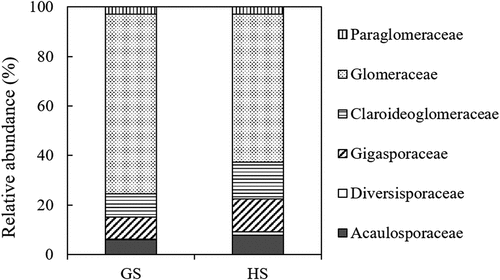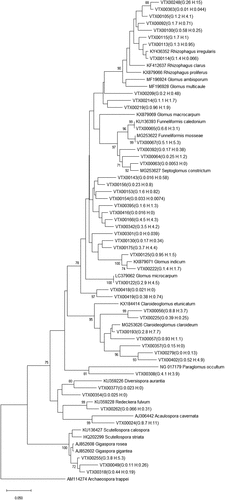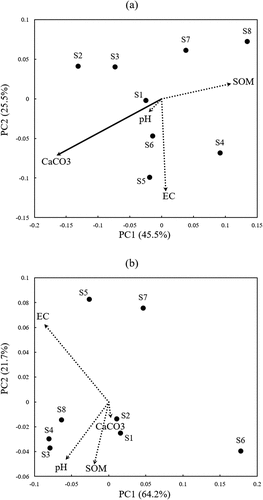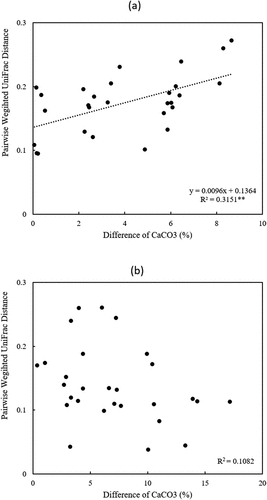Figures & data
Table 1. Geographical information of study sites.
Table 2. AMF alpha diversity. The asterisk labeled implies the significant difference between growing season (GS) and harvest season (HS) (* p < 0.05 by Student t-test). Average ± standard deviation (n = 8).
Figure 1. Comparison of root AMF community compositions of barley between the growing season (GS) and the harvest season (HS). Average of AMF community compositions among eight study sites are shown at the family level.

Figure 2. Phylogenetic relationships of obtained AMF virtual taxa (VTX) in the MaarjAM database. The evolutionary history was inferred using the Neighbor-Joining method. The bootstrap values of >70% are shown next to the branches. The evolutionary distances were computed using the Kimura two-parameter method. Average relative abundances of VTX in barley growing and harvest seasons are shown in parentheses (unit: %).

Table 3. Soil properties of the study sites.
Figure 3. Beta diversity of AMF communities among eight study sites and their relationships to soil chemical properties in barley growing (a) and harvest (b) season. Beta diversity was analyzed by Principal coordinate analysis (PCoA) based on weighted unifrac phylogenetic distance metrics and displayed in the scatter diagram of the first two axes. Solid arrow implies the significant relationship (p < 0.05).


